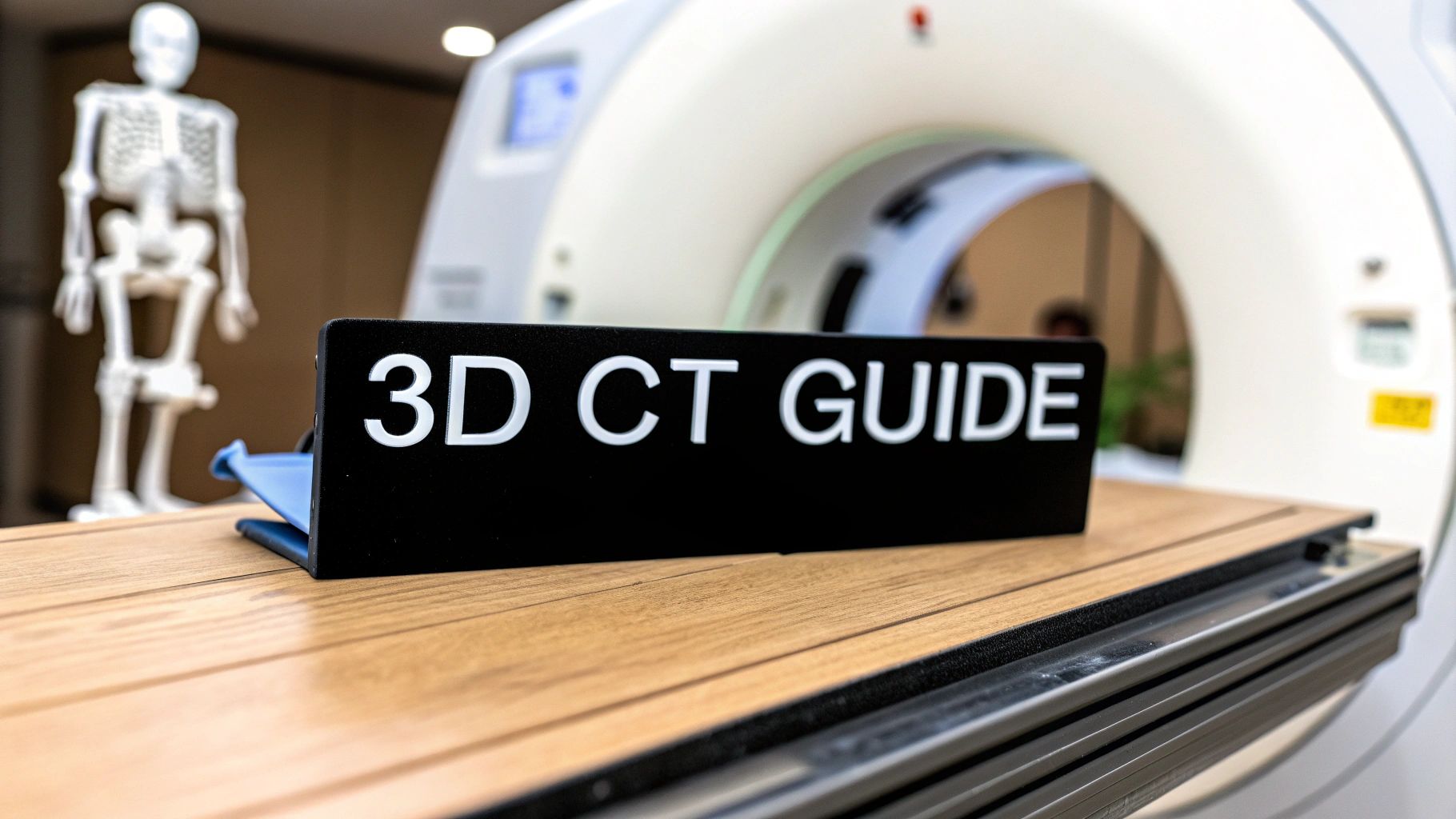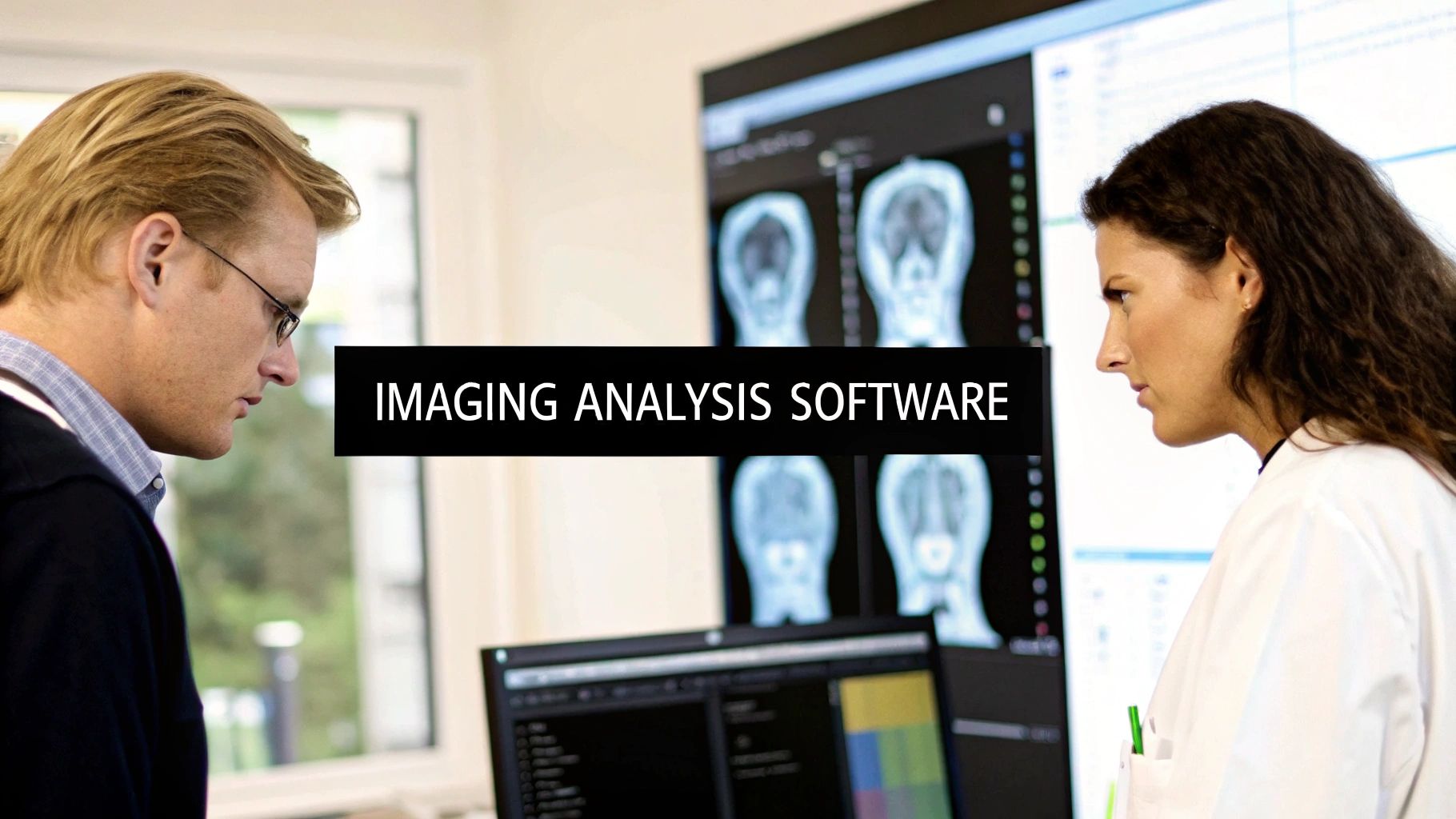Unlocking the Power of Google Cloud Healthcare API
The healthcare industry generates massive amounts of complex data every single day. However, this data's value diminishes if it remains isolated in separate systems. This is where the Google Cloud Healthcare API becomes essential, bridging the gap between fragmented healthcare systems and the potential of cloud computing. This API harmonizes diverse healthcare data standards, such as FHIR, DICOM, and HL7v2, into a unified and practical platform. This interoperability allows healthcare providers to access a more complete view of patient health, leading to better-informed decisions.
This integration is more than just convenient; it unlocks new opportunities. The Google Cloud Healthcare API empowers developers to build next-generation healthcare applications by providing a robust and secure foundation for data exchange and analysis. This allows developers to focus on creating innovative solutions instead of struggling with compatibility issues. Imagine patient records easily accessible regardless of where a patient receives care, leading to faster diagnoses and more personalized treatment. The Google Cloud Healthcare API is a crucial step toward this future.
Further increasing its usefulness, the Google Cloud Healthcare API integrates with advanced analytics and AI/ML tools like BigQuery and Vertex AI. This integration helps companies develop healthcare services faster while complying with regulations like HIPAA. The API, for example, launched in 2020 in response to the strain on health systems during the coronavirus pandemic.
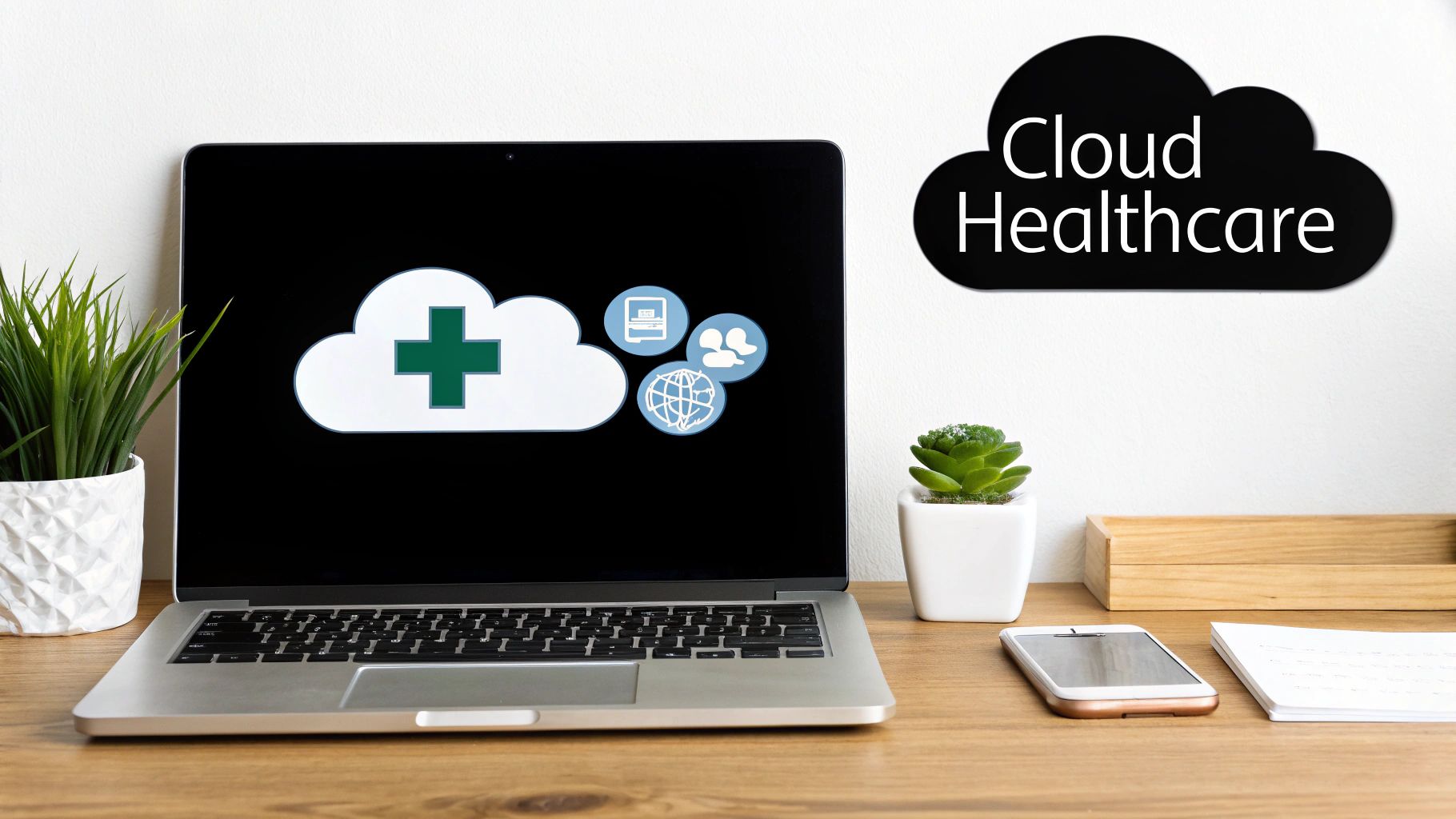
Streamlining Data Management with Key Integrations
The seamless integration of the Google Cloud Healthcare API with other powerful tools within the Google Cloud ecosystem expands the possibilities for data analysis and application development. Connecting with BigQuery allows for large-scale data warehousing and analysis, empowering researchers and healthcare professionals to gain valuable insights from patient populations. Vertex AI brings the power of machine learning, facilitating the development of predictive models for disease risk assessment and personalized treatment plans. These connections create a powerful synergy, enhancing the API's overall value and usefulness.
Moreover, the API's support for established healthcare data standards, including FHIR, DICOM, and HL7v2, ensures compatibility with existing systems. This lets organizations use their current infrastructure while transitioning to a more modern and interoperable one. This interoperability promotes collaboration and data sharing between different healthcare providers, benefiting patients through more comprehensive and coordinated care. By bridging the gap between legacy systems and cloud technology, the Google Cloud Healthcare API is a key enabler of digital advancement in healthcare.
Essential Features That Drive Healthcare Transformation
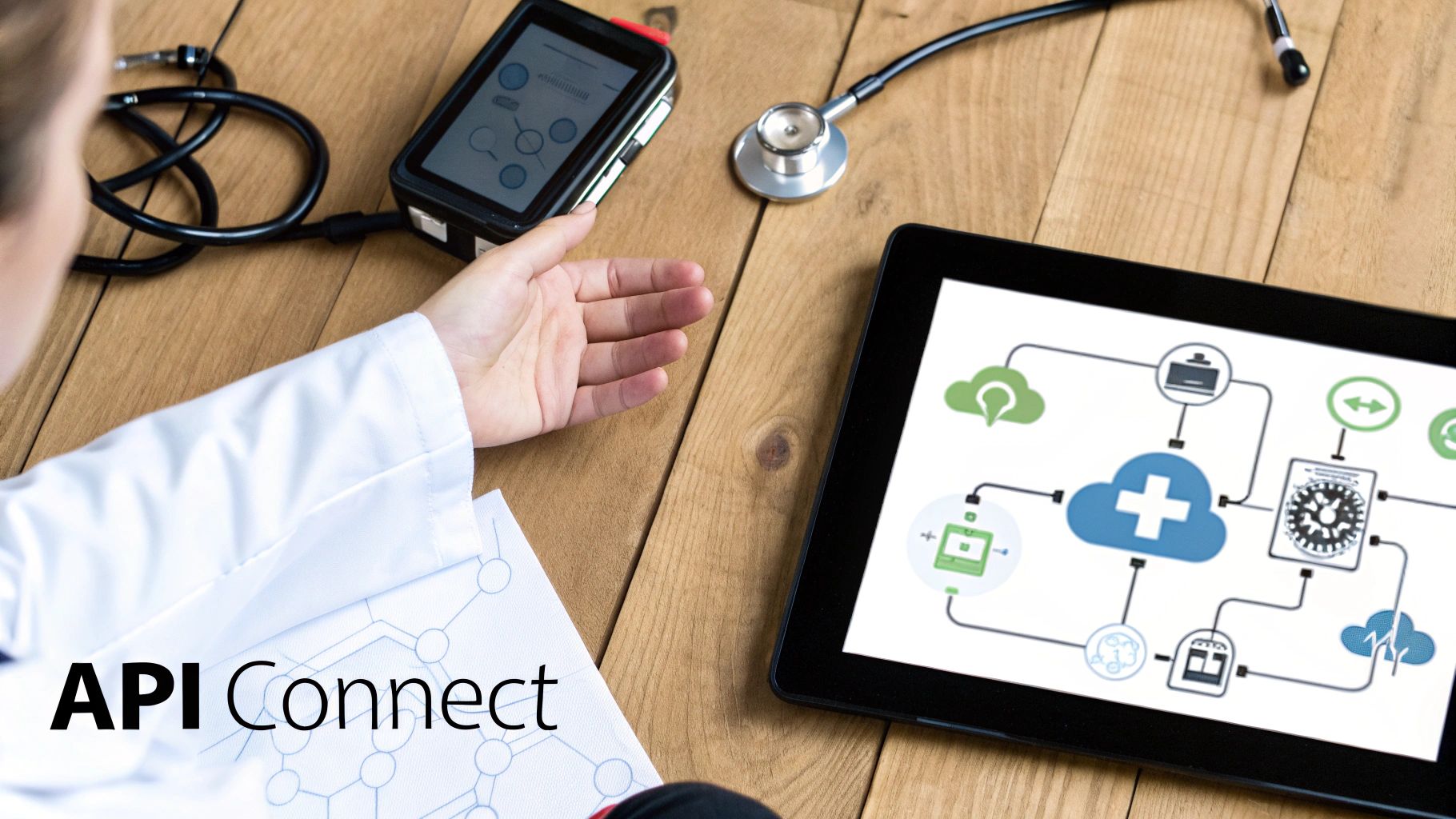
The Google Cloud Healthcare API isn't just a way to move data; it's a comprehensive set of features designed to tackle the intricate world of modern healthcare. These features empower organizations to elevate patient care, make operations more efficient, and foster innovation.
Seamless Data Integration With FHIR, DICOM, and HL7v2
The Google Cloud Healthcare API’s strength lies in its support for key industry data standards. These include FHIR (Fast Healthcare Interoperability Resources), DICOM (Digital Imaging and Communications in Medicine), and HL7v2 (Health Level Seven International version 2). This compatibility helps break down data silos and promotes interoperability.
For instance, a hospital can integrate its electronic health records (EHR) system with a separate imaging archive using the API. This provides a single, unified view of patient data.
This readily available information can significantly improve the speed and accuracy of diagnoses. The API's support for HL7v2 also allows organizations to continue using their existing systems while transitioning to newer technologies like FHIR.
To help illustrate the core differences between these standards, let's take a closer look at the following table.
To help illustrate the core differences between these standards, let's take a closer look at the following table which compares these three data formats and their applications.
Google Cloud Healthcare API Standards Support at a Glance: This table compares the three major healthcare data standards supported by the Google Cloud Healthcare API, highlighting their specific uses and benefits.
| Standard | Primary Use | Key Capabilities | Typical Applications |
|---|---|---|---|
| FHIR | Exchanging healthcare information | Resource-based, RESTful API, web standards | EHR integration, patient portals, mobile health apps |
| DICOM | Storing and transmitting medical images | Standardized image formats, metadata | Picture archiving and communication systems (PACS), radiology workflows |
| HL7v2 | Messaging between healthcare systems | Event-driven architecture, message segments | Hospital information systems (HIS), laboratory systems |
This comparison highlights the unique strengths of each standard and how they can be used together within the Google Cloud Healthcare API to create a comprehensive healthcare data ecosystem. FHIR excels at data exchange, DICOM handles medical imaging, and HL7v2 manages messaging between different systems.
Robust Security and Compliance
Data security is crucial in healthcare. The Google Cloud Healthcare API offers robust security measures to help organizations meet compliance requirements like HIPAA (Health Insurance Portability and Accountability Act).
This protects sensitive patient data while allowing authorized access for healthcare professionals. This balance between security and accessibility is a key advantage, facilitating secure data sharing and collaboration among providers.
This leads to better-informed decisions and more coordinated patient care.
Scalability and Performance for Large Datasets
Healthcare data is both sensitive and large. The Google Cloud Healthcare API is designed to handle massive datasets with high performance, allowing organizations to scale their data operations.
The ability to quickly process large datasets is essential for AI and machine learning applications, which are becoming increasingly vital in healthcare. This allows for analysis to discover trends, patterns, and insights that can improve patient outcomes.
This robust infrastructure means the API can meet the healthcare industry's increasing data demands.
Empowering Healthcare AI With BigQuery and Vertex AI Integration
The Google Cloud Healthcare API integrates smoothly with other Google Cloud tools. Connecting with BigQuery allows for advanced analytics and reporting, while Vertex AI enables machine learning for tasks like predictive modeling and image analysis.
Researchers could use these integrations to identify patients at risk for certain conditions or develop AI-powered diagnostic tools. This transforms the API into a catalyst for healthcare AI innovation.
These features open new possibilities for improved diagnoses, personalized treatments, and streamlined healthcare operations.
Powering Healthcare AI That Actually Delivers Results

The Google Cloud Healthcare API is more than just a data management tool. It's a powerful platform for building AI solutions that can truly improve patient care. By integrating with tools like BigQuery, Vertex AI, and TensorFlow, the API is driving significant advancements in medical decision-making. Organizations are now using it to develop predictive models that identify at-risk patients, sometimes even before symptoms appear.
This proactive approach allows for earlier interventions, leading to potentially better outcomes. This is all thanks to the secure and efficient data management provided by the Google Cloud Healthcare API.
Predictive Modeling and Early Intervention
Predicting patient health risks is a significant step forward in healthcare. The Google Cloud Healthcare API allows healthcare providers to develop predictive models that analyze patient data, identifying individuals at high risk for specific conditions. This empowers targeted interventions and preventative measures.
AI-powered imaging analysis is also enhancing diagnostic accuracy and efficiency. By identifying subtle anomalies often missed by the human eye, AI is improving the speed and precision of diagnoses. This integration of advanced analytics opens doors to proactive and preventative care.
AI-Powered Imaging Analysis
AI is revolutionizing medical imaging. Using the Google Cloud Healthcare API, developers are creating AI-powered tools to analyze medical images (like X-rays and MRIs) with remarkable precision. These tools can detect subtle patterns and anomalies that might not be apparent to human radiologists, resulting in faster and more accurate diagnoses.
This means patients can receive timely treatment, potentially leading to improved outcomes. It also reduces the workload on radiologists, allowing them to focus on more complex cases. The Google Cloud Healthcare API provides the scalable and secure infrastructure needed for these groundbreaking applications.
The Google Cloud Healthcare API supports crucial industry standards like FHIR, HL7v2, and DICOM, simplifying the integration of data from various healthcare systems. The API’s integration with advanced Google Cloud services like Cloud Dataproc, BigQuery, and Cloud ML Engine allows for accelerated analysis and AI-driven insights from healthcare data. Companies like M*Modal are already using the API to deliver real-time, AI-based insights to healthcare providers, enhancing clinical decision-making at the point of care. This integration further accelerates the industry's progress toward better patient outcomes through advanced data analytics and machine learning. For more insights, explore the impact of the Google Cloud Healthcare API at Appinventiv.
The following table showcases the transformative potential of the Google Cloud Healthcare API:
Game-Changing AI Applications Powered by Healthcare API
This table presents various AI and machine learning applications made possible through the Google Cloud Healthcare API integration with advanced analytics tools.
| Application | Description | Benefits | Example Use Case |
|---|---|---|---|
| Predictive Modeling | Analyzes patient data to predict future health risks. | Early intervention, personalized medicine. | Identifying patients at risk of developing diabetes. |
| AI-Powered Imaging Analysis | Automates the analysis of medical images. | Faster and more accurate diagnoses, reduced radiologist workload. | Detecting cancerous tumors in CT scans. |
| Natural Language Processing (NLP) for Clinical Documentation | Extracts insights from unstructured clinical text. | Automated documentation, identification of trends and patterns. | Summarizing patient records, identifying patients eligible for clinical trials. |
The Healthcare API empowers developers to build sophisticated applications that can analyze vast amounts of data, unlocking the potential for truly personalized and proactive healthcare.
Natural Language Processing for Clinical Documentation
Natural Language Processing (NLP) is another exciting application of the Google Cloud Healthcare API. NLP algorithms can analyze unstructured clinical text, such as doctor’s notes and patient records, extracting valuable insights and automating documentation tasks.
This frees up clinicians from tedious administrative work, giving them more time with patients. NLP can also identify trends and patterns in patient data, which can then be used to improve care protocols and develop new treatments.
Measuring the Impact of AI in Healthcare
Tracking the real-world benefits of AI solutions is crucial. The Google Cloud Healthcare API simplifies the collection and analysis of data related to key performance indicators like readmission rates and diagnostic accuracy.
This data-driven approach allows healthcare organizations to measure the effectiveness of their AI initiatives and identify areas for improvement. Tracking these metrics helps demonstrate the value of investments in AI and facilitates continuous optimization of strategies. This iterative process ensures that AI initiatives deliver tangible, measurable results.
Success Stories: Google Cloud Healthcare API In Action
Real-world results demonstrate a technology's true value. This section explores how the Google Cloud Healthcare API is driving improvements in diverse healthcare settings, from small clinics to large hospital systems and from research labs to health tech startups. These examples showcase the practical applications and tangible benefits of this API.
Improved Interoperability and Analytics: The LANES Example
The Los Angeles Network of Enhanced Services (LANES) adopted the Google Cloud Healthcare API in July 2023, demonstrating its substantial impact. LANES manages over half a billion transactions annually for 10 million lives. They implemented the API to improve interoperability and analytics across their network.
By supporting HL7v2, FHIR, and DICOM standards, the API empowers LANES to process large amounts of patient and community data in near real-time. This capability is critical for initiatives like CalAIM, focused on transforming healthcare toward preventive and whole-person care. With Google Cloud, LANES can scale to support millions of FHIR resources, streamlining the user experience for providers. Learn more about LANES and their work with the API here.
Enhanced Efficiency and Insights at Boston Medical
Boston Medical faced challenges with siloed data systems and slow data integration. The Google Cloud Healthcare API offered a solution. They used the API to consolidate disparate data sources, reducing integration costs by 67% and accelerating their time-to-insight.
This improved data access enabled faster, more informed clinical decisions. The enhanced data analysis capabilities also led to more effective population health management programs. This resulted in better patient outcomes and significant cost savings.
Democratizing Data Access for Stanford Researchers
Stanford researchers often face difficulties accessing and sharing crucial clinical data. The Google Cloud Healthcare API helped overcome these obstacles by providing a secure and efficient platform for data storage, access, and analysis.
This accelerated research timelines and promoted collaboration. The API makes data readily available, allowing researchers to focus on discovering new insights and advancements. This efficient data-sharing also facilitates developing new treatments and diagnostic techniques.
Empowering Health Tech Startups
Health tech startups are constantly innovating. However, they often lack the resources of larger organizations. The Google Cloud Healthcare API provides a cost-effective and scalable solution for managing and analyzing data.
This allows them to develop advanced applications, such as personalized health monitoring tools and AI-powered diagnostic assistants. The API provides a foundation, enabling startups to focus on developing unique, patient-centered solutions.
Building a Healthier Future
These case studies are just a few examples of how the Google Cloud Healthcare API is changing healthcare. As the need for interoperability, data security, and advanced analytics grows, this API will play a crucial role in shaping the industry's future. The API empowers organizations to use their data to improve patient care, increase efficiency, and make groundbreaking discoveries. This technology helps realize the potential of patient-centered and data-driven healthcare.
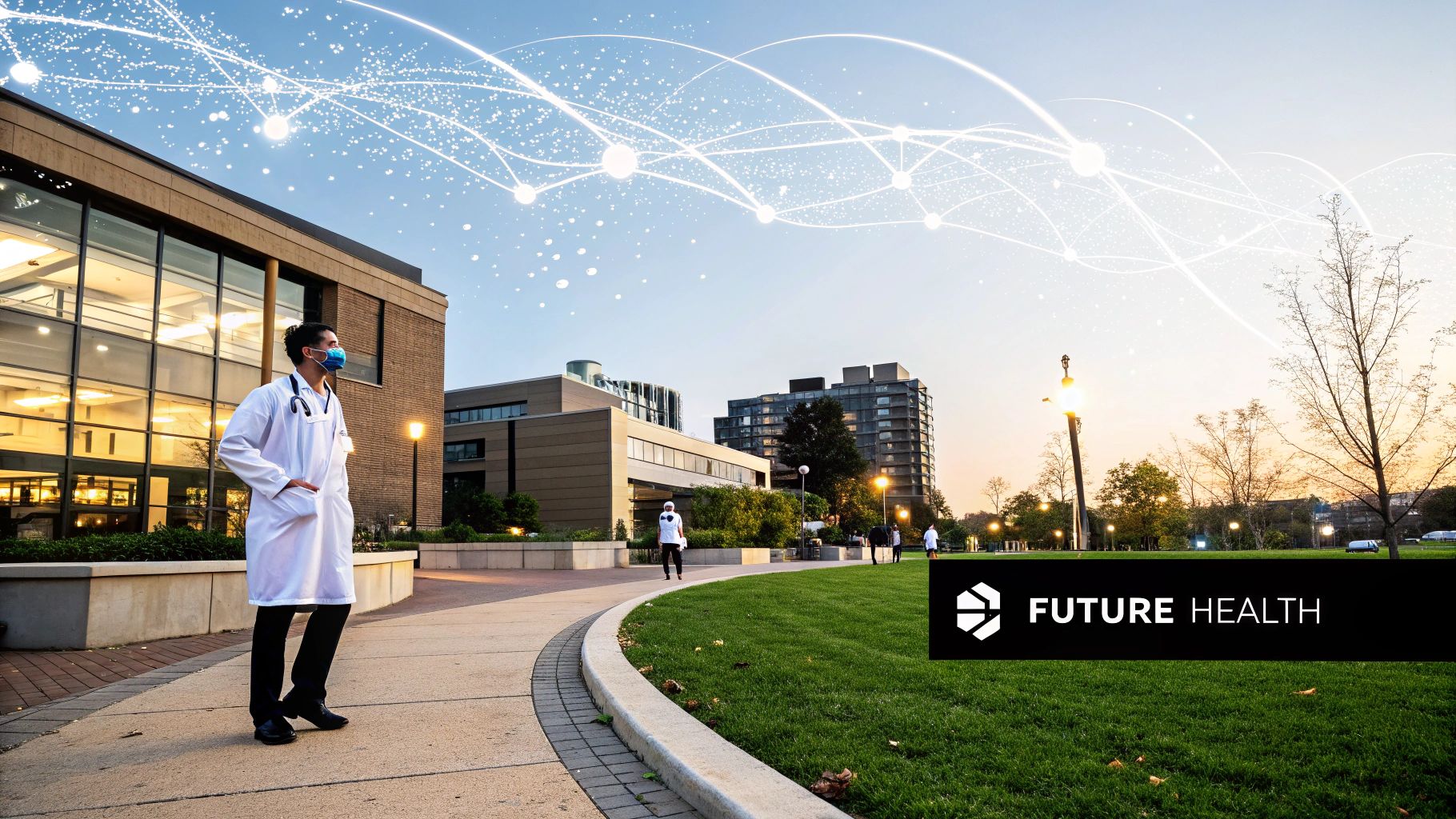
The Rising Tide: Market Growth and Future Potential
The healthcare industry is experiencing a significant shift towards cloud technologies, creating exciting new avenues for innovation and better patient care. With the growing need for data-driven solutions, the Google Cloud Healthcare API is becoming a crucial tool for this progress.
Market Growth and Demand for Cloud-Based Solutions
The healthcare sector's adoption of cloud services is rapidly increasing. The global healthcare cloud market is expected to see a compound annual growth rate (CAGR) of roughly 2% by 2024. This growth highlights the critical role of cloud-based solutions, like the Google Cloud Healthcare API, in handling healthcare data and analytics. For more detailed statistics, check out this blog post on Google Cloud Healthcare API use cases.
This reliance on cloud technology arises from the need for scalable, secure, and cost-effective ways to manage the increasing volume of healthcare data. Cloud platforms also provide the flexibility and processing power necessary for advanced analytics and AI/ML applications, essential components of modern healthcare.
Emerging Use Cases and Future Opportunities
The Google Cloud Healthcare API helps healthcare organizations manage large databases, develop Internet of Things (IoT) solutions for patient care, and enhance security and compliance with healthcare standards. Its ability to facilitate data exchange and support advanced analytics and AI/ML applications is especially valuable. This functionality is paving the way for exciting future advancements in the healthcare industry.
Genomic Medicine at Scale
The Google Cloud Healthcare API's scalability and speed make it a powerful tool for managing the complexity and sheer size of genomic data. This allows researchers and healthcare providers to analyze large datasets efficiently, speeding up the pace of discovery and the advancement of personalized medicine.
As genomic medicine becomes more common, the API's ability to handle this complex data will be even more vital, enabling more targeted therapies and treatments. This is a significant step toward preventative and personalized healthcare.
Remote Patient Monitoring and Population Health
The Google Cloud Healthcare API is also contributing to the growth of remote patient monitoring (RPM) systems. By enabling secure and efficient data transfer between patients and providers, the API helps manage chronic conditions and improves access to care, particularly in underserved regions.
Additionally, the API's ability to collect and analyze data from various sources benefits population health initiatives. These initiatives aim to improve overall community health by identifying trends, risk factors, and intervention opportunities.
Strategic Investments for Long-Term Value
Organizations are recognizing the strategic value of investing in cloud-based solutions like the Google Cloud Healthcare API. This investment not only addresses current data management and interoperability needs but also prepares for future advancements in areas like AI-powered diagnostics and personalized medicine.
By embracing cloud technology, healthcare organizations can achieve new levels of efficiency and innovation in patient care. This strategic shift allows them to adapt to the evolving healthcare environment and position themselves for lasting success.
Overcoming Implementation Hurdles For Lasting Success
Implementing the Google Cloud Healthcare API offers significant advantages, but it also presents unique challenges. Successfully navigating these hurdles requires a strategic approach, combining technical expertise with a deep understanding of the healthcare landscape.
Assessing Current Systems and Planning Data Migration
Before implementing the API, a thorough assessment of your existing systems is crucial. This involves identifying data sources, understanding data formats (FHIR, DICOM, HL7v2), and evaluating current infrastructure limitations. This initial assessment creates a realistic roadmap for data migration.
After understanding your current state, define a clear data migration pathway. This includes data mapping, validation procedures, and a rollback plan for unexpected issues. This preparation minimizes disruptions during the transition.
Integrating With Legacy Infrastructure
Many healthcare organizations rely on legacy systems. Integrating the Google Cloud Healthcare API with this older infrastructure can be complex. A phased approach often minimizes disruption, allowing gradual integration and testing.
This measured approach lets organizations leverage the API's benefits without completely overhauling existing systems. It minimizes risk and allows for continuous adjustments during implementation.
Building Organizational Buy-In
Successful implementation requires support from all stakeholders, from clinicians to IT staff. Clearly communicating the API's benefits, proactively addressing concerns, and providing adequate training are essential for building organizational buy-in.
When everyone understands the value proposition and how the API improves their workflows, they're more likely to embrace the change. This shared understanding and commitment are crucial for long-term adoption.
Balancing Technical Expertise and Healthcare Domain Knowledge
Implementing the Google Cloud Healthcare API requires a blend of technical skills and an understanding of healthcare regulations and workflows. Collaboration between technical experts and healthcare professionals is essential. This ensures the solution meets both technical requirements and the practical needs of healthcare providers.
For example, developers need to understand how clinical data is used practically to design effective data models. Healthcare professionals can provide valuable feedback on the usability and relevance of new tools. This partnership enhances the functionality and adoption of API-driven solutions.
Managing Compliance Requirements
Data security and privacy are paramount in healthcare. Adhering to regulations like HIPAA is non-negotiable when implementing the Google Cloud Healthcare API. Leveraging the API's built-in security features and implementing appropriate access controls are crucial for ensuring compliance.
Organizations need to establish clear data governance policies and procedures. This includes data encryption, access logging, and regular security audits. Staying updated on the latest regulatory requirements is vital for maintaining continuous compliance.
Measuring Implementation Success
Defining clear metrics for success is essential. This might include tracking metrics like data migration speed, system uptime, and user adoption rates. Regularly monitoring these metrics allows organizations to identify areas for improvement and demonstrate the return on investment.
By setting clear objectives and tracking relevant metrics, organizations can ensure their implementation aligns with their strategic goals and provides the anticipated benefits. This data-driven approach allows for ongoing evaluation and optimization of the implementation strategy.
Your First Steps With Google Cloud Healthcare API
Ready to dive into the Google Cloud Healthcare API? This guide will walk you through the initial setup process, whether you're a seasoned developer or just starting out. We'll cover creating your Google Cloud account, configuring the API, and performing basic operations. Plus, we'll provide helpful resources to support you along the way.
Setting Up Your Google Cloud Account
First things first: you'll need a Google Cloud account. If you don't have one already, you can easily create one and leverage the free tier to explore the platform’s features. Once you're set up, enable the Google Cloud Healthcare API from the Google Cloud Console. This console acts as your central hub for managing and interacting with the API, providing you with the necessary tools to harness its power.
Initial Configuration and Basic Operations
After enabling the API, you'll need to configure it to meet your specific needs. This involves setting up data stores and defining access controls. The Google Cloud documentation offers comprehensive guides to help you through this process, designed with beginners in mind. For example, setting up a FHIR store requires specifying the data location and storage type.
Once configured, you can start experimenting with basic API operations. These include creating, reading, updating, and deleting healthcare data using the API's methods. These initial tasks provide practical experience and a foundational understanding of how to interact with the API, preparing you for more complex tasks later on.
Essential Resources and Next Steps
Google offers a wide array of resources to help you get started with the Google Cloud Healthcare API. The official Google Cloud Healthcare API documentation provides extensive information, including detailed guides, tutorials, and API references. It's a valuable resource that you'll want to keep handy throughout your development journey.
Connecting with the developer community is also highly recommended. Engaging with other developers through online forums and communities offers a platform for sharing ideas and seeking support. Learning from the experiences of others can significantly accelerate your learning process.
Starting with a small pilot project is a great way to gain hands-on experience and build confidence. Choose a manageable project aligned with your goals and technical skills. This minimizes risk and provides a tangible learning opportunity. By setting realistic milestones and tracking your progress, you can steadily expand your knowledge and proficiency with the API. This methodical approach lays a strong foundation for tackling more ambitious projects down the line. Explore the practical applications of AI in medical imaging with PYCAD to further enhance your healthcare solutions.


